The remnants of the Khmer Rouge era linger in Cambodia, where sites like the Tuol Sleng Museum and the Cheung Ek Killing Fields stand as stark reminders of a tumultuous past. Visitors often find themselves grappling with the weight of history, encountering stories that evoke both sorrow and resilience. These locations don’t just mark a time of suffering; they challenge individuals to reflect on the impact of such atrocities on today’s society. What lessons can be drawn from these haunting experiences, and how do they shape the future for Cambodia and beyond?
Key Points
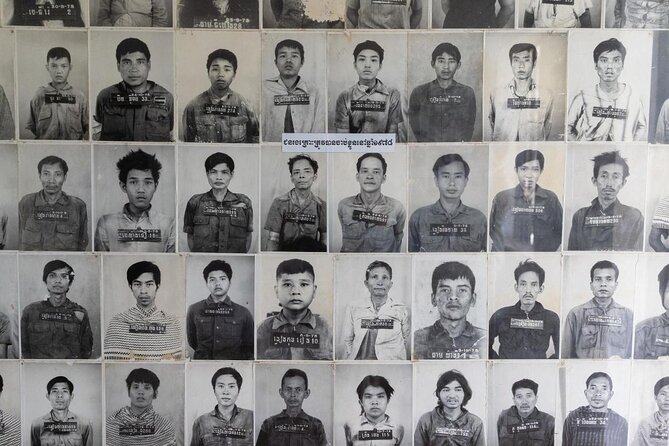
- The Tuol Sleng Museum preserves evidence of Khmer Rouge atrocities, showcasing photographs and artifacts from the S-21 prison.
- Cheung Ek Killing Fields memorializes victims through mass graves and a stupa filled with skulls, highlighting the regime’s brutality.
- Guided tours often feature survivors sharing personal stories, emphasizing resilience amidst the horrors of the Khmer Rouge era.
- Visitors experience deep emotional connections to Cambodia’s past, fostering understanding of the impact of the Khmer Rouge on society.
- Remembering this history is crucial for educating future generations and promoting justice and peace in Cambodia.
Historical Context of Khmer Rouge

The Khmer Rouge, a radical communist regime led by Pol Pot, emerged in the chaotic aftermath of the Cambodian Civil War, aiming to transform Cambodia into an agrarian utopia but instead unleashing a reign of terror that resulted in the deaths of nearly two million people.
Taking power in 1975, they sought to eliminate urban culture, abolish money, and enforce brutal agricultural practices. Families were torn apart, and intellectuals, professionals, and anyone perceived as a threat were executed.
This oppressive regime created a climate of fear, where neighbors turned against each other.
The impact of their rule still resonates today, as Cambodia grapples with the scars of this dark chapter in its history, reflecting on the resilience of its people amidst unimaginable suffering.
You can also read our reviews of more tours and experiences in Phnom Penh.
Key Sites to Visit
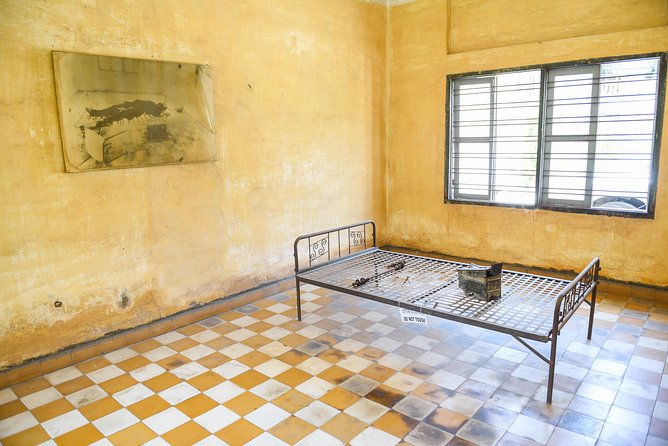
Exploring the haunting remnants of Cambodia’s past, visitors can enjoy the poignant sites of Tuol Sleng Museum and Cheung Ek Killing Fields, each telling a powerful story of the Khmer Rouge era. These locations serve as essential stops for anyone wanting to grasp the depth of Cambodia’s history and the impact of its dark past.
Tuol Sleng Museum: Once a prison, it now holds harrowing photographs and artifacts.
Cheung Ek Killing Fields: A memorial site that commemorates the victims of the regime.
Guided Tours: Professional guides provide invaluable insights and personal stories.
Emotional Experience: Visitors often leave with a deeper understanding of resilience and hope.
The Tuol Sleng Museum
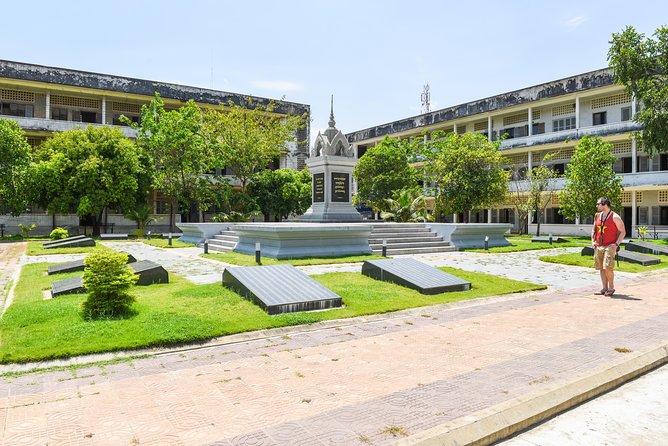
Nestled in the heart of Phnom Penh, Tuol Sleng Museum stands as a haunting reminder of the Khmer Rouge‘s brutal regime, preserving the stories of its countless victims.
Once a high school, it transformed into S-21, a notorious prison where thousands endured unimaginable suffering. Visitors wander through chilling exhibits, including photographs of prisoners and remnants of torture devices.
The museum’s guides, often survivors themselves, share poignant tales that echo the resilience of the Cambodian people. While it’s a somber experience, it’s crucial for understanding the country’s history and healing process.
Tuol Sleng Museum serves not just as a memorial, but as a powerful educational platform, ensuring that such atrocities are never forgotten.
The Cheung Ek Killing Fields
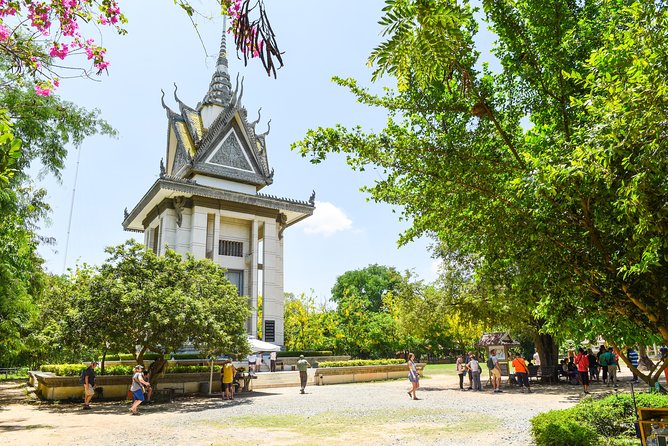
Just a short drive from Tuol Sleng, the Cheung Ek Killing Fields starkly illustrate the tragic extent of the Khmer Rouge’s reign, where the echoes of history resonate through the somber landscape. This haunting site, once a fruit orchard, now serves as a memorial to those who lost their lives in the brutal regime. Visitors often feel a profound connection as they walk through the fields, reflecting on the past.
A chilling memorial stupa filled with skulls,
mass graves that reveal the scale of atrocities,
audio guides sharing survivor stories,
and peaceful surroundings that contrast with the horrific history.
Cheung Ek invites visitors to remember and honor those who suffered, making it a vital part of Cambodia’s complex narrative.
Tour Experience and Insights
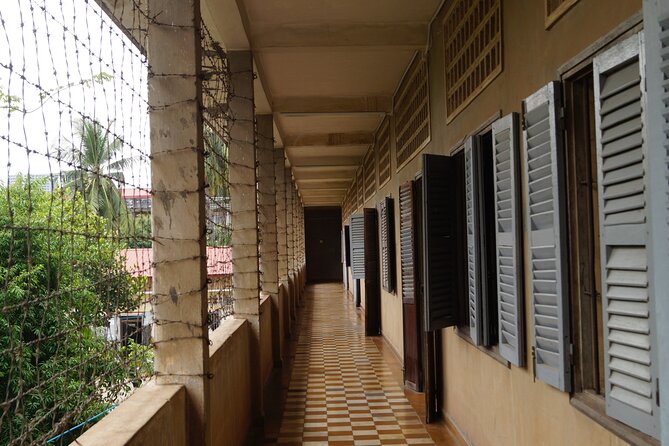
While visiting the Tuol Sleng Museum and Cheung Ek Killing Fields, participants gain intimate insights into Cambodia’s painful history, guided by knowledgeable experts who share powerful narratives of survival and resilience.
These tours aren’t just about facts; they evoke deep emotions and foster a profound understanding of the Khmer Rouge era. As guides recount personal stories and historical details, visitors often find themselves reflecting on the strength of the human spirit in the face of unimaginable adversity.
The atmosphere is somber yet enlightening, allowing for moments of contemplation and connection with the past. By the end of the tour, participants leave with a renewed appreciation for Cambodia’s journey toward healing and reconciliation, making it an unforgettable experience.
- Daily Trip Phnom Penh to Siem Reap
- Phnom Penh to Siem Reap by Private Car or Minivan
- Tuol Sleng Genocide Museum (S-21) and Choeung Ek Killing Fields Tour
- A Day Trip Sightseeing Phnom Penh – Siem Reap – Private English Speaking Driver
- Phnom Penh Morning Market & Food Tour by Tuktuk – Includes All Food & Drinks!
- Visit 11 Places in One Day Tour Including S21 & Killing Field
Visitor Guidelines and Recommendations
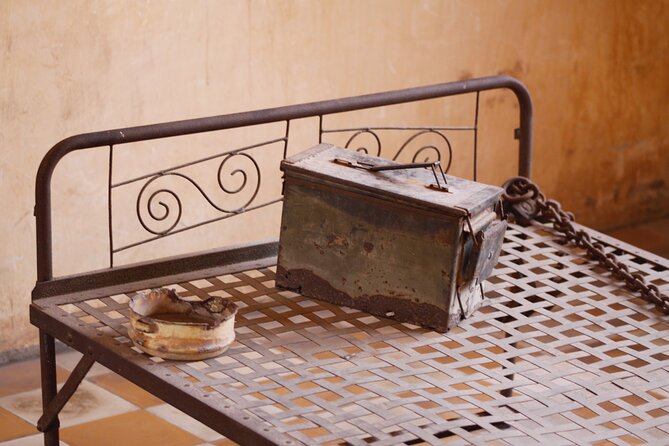
Before embarking on the tour, visitors should take note of the strict dress code and other important guidelines to ensure a respectful experience at Tuol Sleng Museum and Cheung Ek Killing Fields. Adhering to these rules not only demonstrates respect for the site but enhances the overall experience.
-
Wear modest clothing that covers shoulders and knees.
-
Avoid bringing large bags; small personal items are best.
-
Stay with the group and follow the guide’s instructions.
-
Ensure your hotel information is accurate for pickup, as last-minute changes may incur fees.
Emotional Impact of the Tour
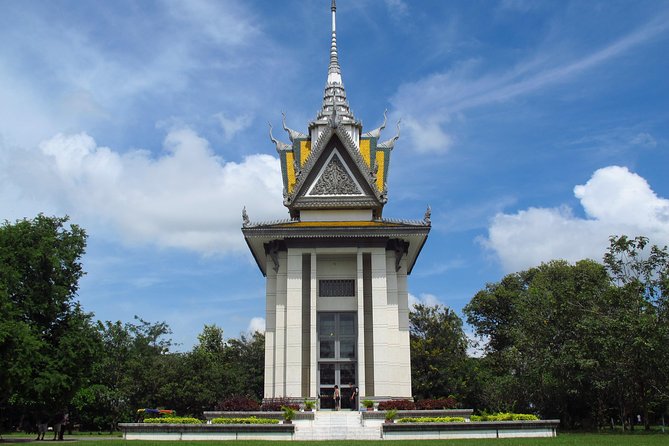
The tour of Tuol Sleng Museum and Cheung Ek Killing Fields profoundly affects visitors, as they confront the stark realities of Cambodia’s harrowing past.
Many find themselves grappling with intense emotions, from sorrow to anger, as they witness the remnants of a brutal regime. The haunting stories shared by guides resonate deeply, reminding attendees of the human cost of the Khmer Rouge’s atrocities.
As participants walk through the exhibits and the Killing Fields, they often feel a sense of connection to those who suffered. This emotional journey fosters reflection and understanding, compelling visitors to appreciate the resilience of the Cambodian people.
Ultimately, the experience leaves a lasting impact, encouraging a personal reckoning with history’s painful truths.
Importance of Remembering History
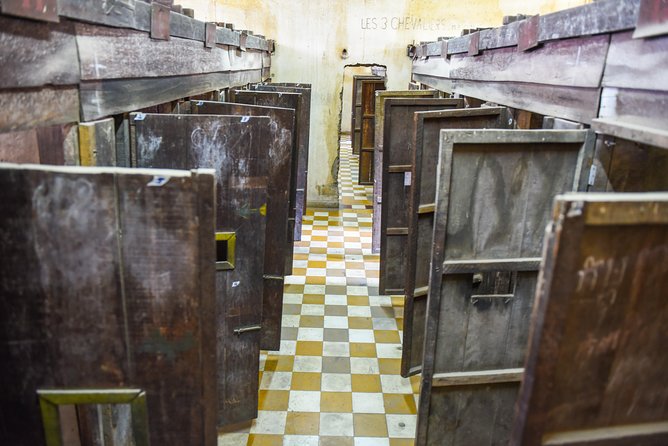
Understanding the emotional weight of Cambodia’s past highlights why remembering history is vital in preventing similar atrocities from occurring in the future. By reflecting on the Khmer Rouge era, society can learn critical lessons that resonate today.
-
Fostering Empathy: Connecting with the experiences of victims cultivates compassion.
-
Encouraging Accountability: Understanding past actions promotes responsibility among leaders.
-
Preserving Cultural Identity: Remembering history helps maintain a nation’s heritage and resilience.
-
Educating Future Generations: Teaching history ensures that the horrors of the past aren’t forgotten.
These points underscore the necessity of remembrance, helping individuals and communities to advocate for justice and peace.
Frequently Asked Questions
What Is the Best Time of Year to Visit These Sites?
The best time to visit these sites is during the dry season, from November to February. During these months, the weather’s cooler and more pleasant, making the exploration of Cambodia’s history much more enjoyable.
Are There Any Age Restrictions for the Tour Participants?
The tour has age restrictions; it’s not recommended for children under 12. Infants must sit on laps, ensuring a safer experience for younger ones while focusing on the historical significance of the sites visited.
Can I Take Photographs at Tuol Sleng and Cheung Ek?
Visitors can take photographs at Tuol Sleng and Cheung Ek, but they should be respectful. It’s important to remember the historical significance of these sites, ensuring that their pictures honor the memories of those affected.
Is Food or Drink Available During the Tour?
During the tour, there aren’t any food or drink options available. However, participants often enjoy local snacks and meals afterward, allowing them to reflect on their emotional and educational experience while exploring Cambodia’s complex history.
How Long Should I Allocate for Each Site Visit?
For each site visit, she recommends allocating about 1.5 to 2 hours. This allows ample time to explore, absorb the history, and reflect on the significant events that shaped Cambodia’s past.
Recap
Visiting the remnants of the Khmer Rouge era isn’t just about seeing history; it’s about honoring those who suffered.
The Tuol Sleng Museum and Cheung Ek Killing Fields offer powerful insights into Cambodia’s past. As visitors walk through these poignant sites, they’re reminded of the resilience of the human spirit.
By confronting these haunting legacies, people ensure that the lessons learned endure, fostering a commitment to remembering and preventing such atrocities from happening again.
More Tour Reviews in Phnom Penh
- Sunset Cruise: Your Cruise You Choose, 3 wonderful options
- Visiting 9 Places in 3 hours Tour by Tuk-Tuk in the Evening
- Scenic Phnom Penh to Siem Reap Transfer with Sightseeing
- Phnom Penh: Full-Day City Tour with Experienced Tour Guide
- Phnom Penh: Private Tuk-Tuk Tour with English-Speaking
- Phnom Penh: Nightlife Hidden Local Bars Tour
Not for you? Here's more nearby things to do in Phnom Penh we have reviewed
- Sunset Cruise: Your Cruise You Choose, 3 wonderful options
- Visiting 9 Places in 3 hours Tour by Tuk-Tuk in the Evening
- Scenic Phnom Penh to Siem Reap Transfer with Sightseeing
- Phnom Penh: Full-Day City Tour with Experienced Tour Guide
- Phnom Penh: Private Tuk-Tuk Tour with English-Speaking
- Phnom Penh: Nightlife Hidden Local Bars Tour
- Phnom Penh: Sunset Cruise with Unlimited Beers & BBQ Buffet
- Kulen Waterfall: Rise and Shine with Cliff, Village w/ Guide
- Killing Fields and Toul Sleng S21 Museum Half-Day Tours
- Phnom Phnom: Local Market & Culture Walking of City Tour
- Phnom Penh: Full-Day City Tour with Royal Palace & Killing
- Phnom Penh: Royal Palace, S21, Killing Fields & More Tour
